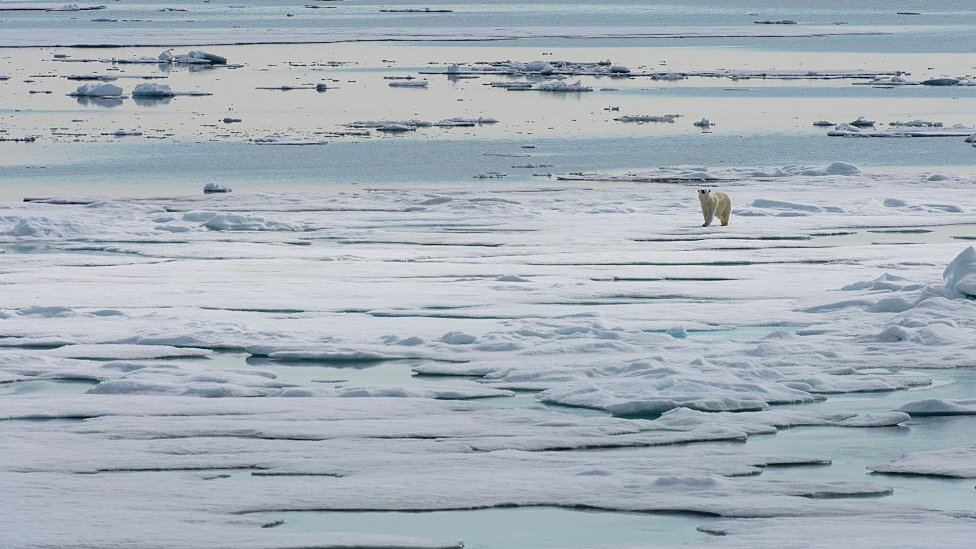

image copyrightGetty Images
The International Maritime Organization has passed a series of restrictions on ships which use and transport heavy grade oils.
It hopes these will help protect the lands, communities and wildlife of the Arctic.
But the new rules include a series of waivers and exemptions for ships from Arctic coastal states.
The decision has been condemned by environmentalists as a “massive missed opportunity”.
Heavy fuel oil (HFO) is widely used to power commercial ships. HFO’s have been banned in Antarctic waters since 2011 over fears that oil spills could cause pollution.
Dr Sian Prior, from the Clean Arctic Alliance, said the IMO and its member states “must take collective responsibility for failing to put in place true protection of the Arctic, indigenous communities and wildlife from the threat of heavy fuel oil”.
The IMO’s plan “would allow 74% of HFO-fuelled ships to keep using HFO in the Arctic,” said Dr Bryan Comer, from the International Council for Clean Transportation.
“(It) would result in a reduction of HFO carried of just 30% and a cut in black carbon emissions of only 5%,” he added.
And John Maggs, senior policy advisor at Seas at Risk said: “A ‘ban’ that affects just a quarter of ships is not a ban at all.”
A coalition of green groups had proposed a much tougher set of restrictions but they were rejected by delegates.
image copyrightGetty Images
HFO produces emissions of harmful pollutants, including sulphur oxide, nitrogen oxides, and black carbon. Furthermore, an accident which resulted in an HFO spill from a ship could wreak havoc on the Arctic’s fragile ecosystem.
Analysts say with the amount of sea ice reducing in the Arctic, more and more ships will use the Northern Sea Route.
The new restrictions, which will come into force in July 2024, aim to reduce the number of ships that can use and transport HFO in the Arctic.
But included are a whole string of exclusions and waivers for ships that carry the flag of the five central Arctic coastal countries (Russia, Norway, Denmark (Greenland), Canada and the US) until July 2029.
Russia has the largest number of vessels in the Arctic area. It told IMO delegates that the NGO proposal was “irresponsible”.
Earlier this month, Norway announced its own proposed HFO ban from all the waters around the Arctic island archipelago of Svalbard.
“This is yet another sad day for the Arctic,” said Sigurd Enge, manager of Shipping, Marine and Arctic Issues, Bellona.
“The Arctic environment is threatened from all sides, from climate change, toxic contamination, plastic pollution, oil exploration and other extractive industries. What the Arctic needs now is better protection and bold politicians.”
Read MoreFeedzy
A business can develop in many ways. One of the best ways to grow your…
American families are once again juggling the seasonal custom—and financial burden—of back-to-school shopping as the…
Want to bond over unexpected activities? Look at these unconventional ways to connect with your…
Burnout isn’t just something that happens to CEOs. For moms homeschooling littles, it’s a very…
When it comes to long-distance motorcycling, comfort, reliability, and smart engineering can make or break…
Flowers have seen significant transformation over time; online flower shopping is increasingly common now for…